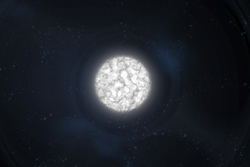Probing cosmos with light
White dwarfs and neutron stars represent the last observable stage of evolution for brightly burning stars are key laboratories to study matter in its most extreme conditions. Understanding the properties of these dim stellar corpses requires confronting observations with fundamental physics in density and temperature conditions not reproducible in ground-based laboratories. The 'Probing models of pulsars through multi wavelength observations' (PROMOPS) project gathered crucial information on mechanisms of light emission. This was achieved through multi-wavelength observations with the Optical Pulsar Timing Analyser (OPTIMA) and the Skinanas astronomical observatory in Greece, the XMM-Newton satellite and the Hubble Space Telescope. By combining information from different bands, astronomers pieced together the origin of light observed from the binary system SAX J2103.5+4545 and cataclysmic variables such as V2069.The binary system SAX J2103.5+4545 is composed of donor star and an accreting pulsar — a magnetised rotating neutron star —, while in V2069 Cygni the accreting white dwarf has strong magnetic field, Under the conditions prevailing inside them, the way nucleons interact was uncertain. However, accurate calculation of radius and mass were crucial to constrain the equation of state and determine the state of matter in such compact objects. Multi-wavelength observations allowed for modelling the spectral energy distribution from the near infrared and optical up to the X-ray band. In addition, OPTIMA provided sufficient spectral and temporal resolution to measure the accretion flows through emission line shifts. Coupled with geometrical constraints on the accretion flow available from light curves, this information permitted a detailed view of the complex interplay between the streaming accreted matter and the magnetic field.Researchers also tested OPTIMA observation against solutions of the multiple body problem, the set of equations which define the attraction between stellar objects. This made it was possible to determine both the mass and temperature of the pulsar and the white dwarf. The findings of the PROMOPS project will in turn provide important complementary information to experiments carried out on Earth for nuclear physics, particle physics and general relativity, which cannot probe high density and low temperature regimes.







